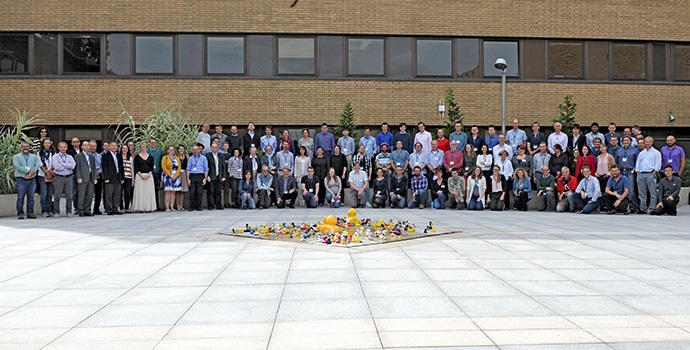
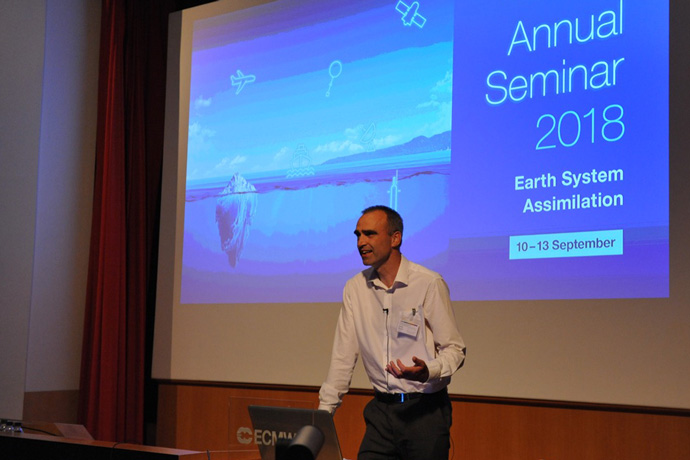
In his welcome address, Director of Research Andy Brown noted that exciting developments in data assimilation are under way at leading numerical weather prediction centres.
Nineteen speakers presented progress and challenges in Earth system data assimilation at ECMWF’s Annual Seminar from 10 to 13 September 2018. More than a hundred participants attended this flagship event in ECMWF’s calendar.
“The quality of the presentations was outstanding, adding to the already strong reputation of the Annual Seminar,” said Stephen English, the Head of Earth System Assimilation at the Centre.
The first day saw a series of introductory talks. Mark Buehner (ECCC, Canada) explained the need for coupled Earth system data assimilation. His talk covered aspects of sea ice assimilation and he showed the potential benefit of applying scale-dependent approaches to coupled covariances.
John Eyre (Met Office, UK) presented the plans for the WMO Integrated Global Observing System and progress to date with fulfilling the implementation plan for the Vision 2025 statement. There was a discussion on the pressures arising from the growing commercial sector and on how to build on successful demonstration missions, such as ESA’s recently launched Aeolus satellite.
Patricia de Rosnay (ECMWF) gave an overview of coupled assimilation activities across ECMWF’s operational systems. She introduced the language convention now adopted by the WMO for flavours of weak and strong coupled data assimilation and demonstrated the consistency of ECMWF’s approach.
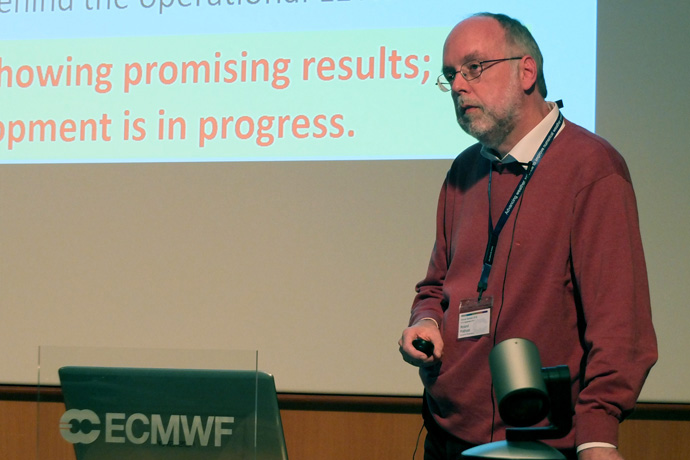
Roland Potthast (DWD, Germany) reported promising results in experiments with particle filters.
Challenges
The second day focused on current challenges in data assimilation. Massimo Bonavita (ECMWF) talked about handling non-linearity and non-Gaussianity in variational methods. He said some cases could be addressed through multiple outer loops and careful handling of scale-dependent errors.
Roland Potthast (DWD, Germany) showed interesting new results on the use of particle filters in high-order systems. The particle filter approach can be shown to handle non-Gaussianity in simple systems and the results presented may encourage further research into these techniques in NWP.
Anthony Weaver (CERFACS, France) talked about state-of-the-art research on background error and hybrid techniques. He discussed the Chebyshev iteration approach for diffusion-based correlation modelling, highlighting its attractive properties for parallel computing.
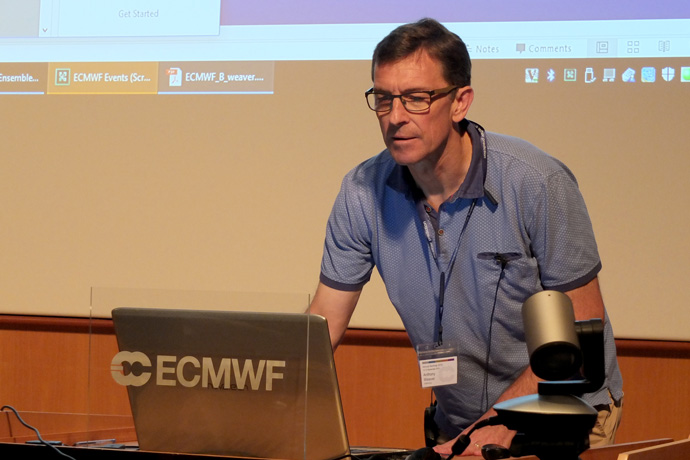
Anthony Weaver (CERFACS, France) chaired the Annual Seminar talks given on the third day.
Chiara Piccolo (Met Office, UK) presented a comparison of model error estimated from a data assimilation system with stochastic error schemes used in ensemble systems, showing the different characteristics of the resulting estimates.
Marc Bocquet (École des Ponts ParisTech, France) showed how methods to account for sparse observation networks could be applied to atmospheric composition analysis, to create an adaptive approach that could evolve with the observing system.
Sarah Dance (University of Reading, UK) described methods for diagnosing and handling complex observation errors, including correlated errors. Her talk addressed both inter-channel error and spatially correlated errors.
Coupled data assimilation
The third day focused on coupling between sub-systems. A major driver for coupled data assimilation is the desire to provide balanced initial conditions for coupled forecasts.
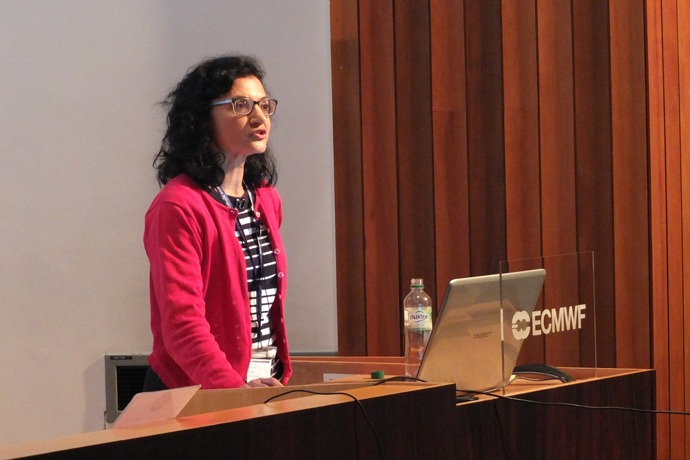
Saroja Polavarapu (ECCC, Canada) talked about coupling between weather and atmospheric composition.
Nils Wedi (ECMWF) presented modelling advances to improve the description of variables at interfaces between sub-systems. He talked about atmosphere–ocean–sea ice systems and what one may learn from the coupling of fast processes in the existing land and snow model interfaces.
Saroja Polavarapu (ECCC) gave a presentation on coupling between weather and atmospheric composition. She noted that the carbon cycle illustrates the unique challenges associated with atmospheric chemistry models.
Marta Janiskova (ECMWF) gave an account of the linear model needed for adjoint-based data assimilation methods. She showed that the linear model performs very well in tests at a horizontal resolution of about 18 km (TCo639) and only limited instabilities were found at about 9 km (TCo1279).
Sergey Frolov (NRL, US) gave an overview of data assimilation coupling methods, including weakly coupled, outer-loop coupled, interface coupled, and strongly coupled methods. He urged caution on strongly coupled methods, at least until we find ways of reliably specifying the covariances.
Alan Geer (ECMWF) gave a presentation on observation operator coupling, arguing that existing atmospheric radiance assimilation could help infer surface properties directly. However, he noted that many components needed to do this still need to be developed.
Dinand Schepers (ECMWF) presented ECMWF's progress in applying outer-loop coupling in reanalyses. Recently the portfolio of coupled ECMWF reanalyses was expanded with CERA-SAT, a nine-year reanalysis in the satellite era proving the viability of using the full observing system in a coupled assimilation framework.
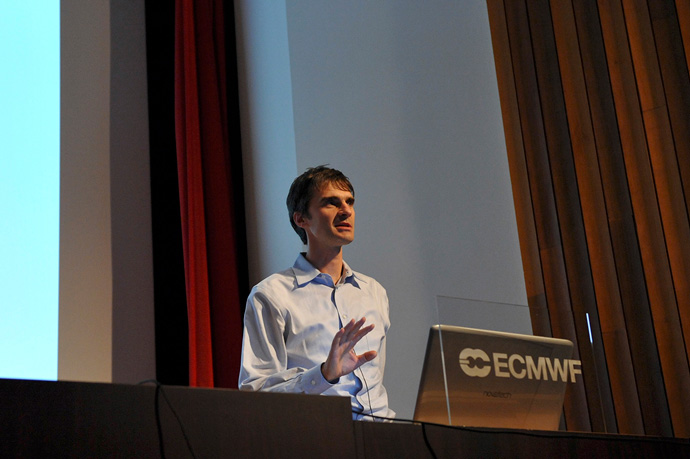
Sergey Frolov (NRL, US) gave an overview of data assimilation coupling methods.
Outlook
On the final day, speakers presented the current status of Earth system data assimilation in different components and summarised the challenges for the future.
Antje Inness (ECMWF) highlighted some of the challenges faced in the field of atmospheric composition, in particular arising from the special characteristics of different species, including aerosol.
Phil Browne (ECMWF) talked about assimilation for the ocean, noting the main differences from other application areas and presenting the methods used. He went on to discuss the latest results in weak and quasi-strong coupling configurations.
Clara Draper (NOAA, US) presented the state of the art in land surface assimilation. She emphasised that the land converges to a state from the forcing fields and described the design of land data assimilation systems and coupled land–atmosphere data assimilation experiments.
The last presentation of the seminar was given by Jean-François Mahfouf (Météo-France), who summarised the key strategic messages from the seminar for operational Earth system assimilation. He illustrated his presentation with examples of Earth system data assimilation for limited-area modelling and short-range forecasting at Météo-France.
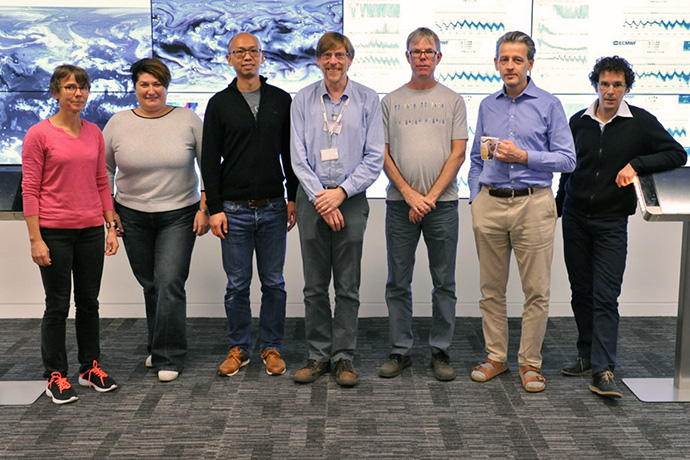
The members of the Annual Seminar 2018 organising committee were (from left) Patricia de Rosnay, Rossana Dragani, Hao Zuo, Stephen English, Lars Isaksen, Elias Holm and Sébastien Massart as well as (not in the photo) Massimo Bonavita, Niels Bormann, Johannes Flemming, and Hans Hersbach.
Further information
More information as well as all presentations and recordings of the talks can be found on the Annual Seminar 2018 web page.
